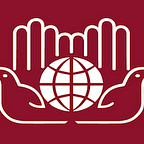Displacement in Bangladesh: A Reflection on Climate Change and Migration
In May 2019, Cyclone Fani tore through parts of India, before moving over Bangladesh, a country incredibly vulnerable to severe weather. In India and Bangladesh, the storm killed dozens, but matters could have been significantly worse in Bangladesh if it were not for emergency evacuations prior to the storm’s landfall. According to The Guardian, Fani displaced about 1.2 million vulnerable people in low lying territories in Bangladesh into about 4,000 shelters. While the storm destroyed several villages, damaged infrastructure, and impeded agricultural communities, evacuation helped minimize human loss. Bangladesh’s history is wrought with horrific stories about severe weather bringing significant loss to the country. In 1970, the Bhola cyclone, recorded as the worst tropical cyclone in Bangladesh history, hit the country and killed approximately 300,000 people. According to a local news outlet, The Dhaka Tribune, there have been at least 11 other major tropical cyclones to hit the country since 1965, leaving 479,490 people dead. Although high death tolls were avoided in the most recent 2019 cyclone, a significant threat remains for those living in vulnerable communities in Bangladesh. Severe weather, such as tropical cyclones, are only expected to increase in frequency and strengthen in severity as climate change worsens.
Climate change poses severe threats to human rights, economic and political stability, and life itself, especially for vulnerable countries like Bangladesh. Bangladesh has already fallen victim to climate change and is poised to take an even harder hit. The country’s low elevation, high population density, inadequate infrastructure, and reliance on farming are threatened by sea-level rise, severe weather, and drought. Bangladesh may not be able to adapt to the impacts of climate change. In order to cope with these natural weather patterns, Bangladesh citizens often resort to both short term and long term migration. However, these natural patterns are not so natural anymore as they are exacerbated by climate change, forcing the numbers of those displaced higher and higher every year. According to The Environmental Justice Foundation (EJF), one in every seven people in Bangladesh will be displaced by climate change by 2050.
Displacement along the Bangladesh coast is the most common form of displacement in the country. The numbers are unsettling, and coastal damage presents several other human rights concerns as well. According to the EJF, two-thirds of Bangladesh is less than five meters above sea level, and 28% of the country’s population lives along the coast. These areas are extremely susceptible to flooding due to sea-level rise. Many citizens are saddened to see their villages destroyed by flooding and are forced to leave. Nearly 15 million people are expected to be affected along Bangladesh’s coastal territories due to flooding and sea-level rise by 2050. Not only do rising sea levels threaten to destroy people’s homes and villages, but it can also cause significant health problems due to saltwater contamination of water supplies. When this happens, the 33 million people who rely on coastal drinking supplies are vulnerable to disease. Sea level rise has other implications on the agriculture community of Bangladesh as well. Riverbank erosion, landslides, and drought are other catalysts on displacement in the country.
In Bangladesh, most of the displaced communities choose to migrate within the country. Some choose to cross the border to India, but a majority move to urban areas and live in slums. Many Bangladeshi families are migrating to cities, mainly the capital city of Dhaka, cite environmental plight as the biggest reason for their decision. Upwards of 1,000 people move to Dhaka every day, where they most likely end up in slums along the outskirts of the city. These slums have a high population density, poor housing conditions, and heinous sanitation. It is an inhumane way to live. Yet, several of the displaced have no other option and cannot migrate internationally.
As previously reported on the HumanitarianPulse, the international community is entirely lacking in regards to recognizing and protecting those displaced by climate change. The EJF and other NGOs and socially-minded non-profit businesses are calling for substantial change to climate policy. Without recognition and protection of climate-related migrants (or refugees) fragile states will not be adequately prepared to take in the influx of migrants, which may lead to more instability. Therefore, the EJF has taken it upon themselves to define what a climate refugee is and made a series of recommendations for effective governance. They define a climate refugee as “persons or groups of persons, who for reasons of sudden or progressive climate-related change in the environment that adversely affects their lives and living conditions, are obliged to leave their habitual homes either temporarily or permanently, and who move either within their country or abroad.” If such a definition made its way into current legal and policy frameworks, a group of the world’s most vulnerable people might receive greater recognition, which may lead to protection. This recognition may provide a stronger outlet and a brighter future for threatened communities in Bangladesh. To see more of the EJF’s recommendations for governance, go to their website.
Written By Charles Beauregard, Refuge Press Intern, Summer 2019
About the IIHA
The Institute of International Humanitarian Affairs (IIHA) prepares current and future aid workers with the knowledge and skills needed to respond effectively in times of humanitarian crisis and disaster. Our courses are borne of an interdisciplinary curriculum that combines academic theory with the practical experience of seasoned humanitarian professionals. The IIHA also publishes on a wide range of humanitarian topics and regularly hosts a number of events in the New York area, including the annual Humanitarian Blockchain Summit and Design for Humanity Summit.
For media inquiries, please contact: Camille Giacovas, Communications & Research Officer, IIHA, cgiacovas@fordham.edu
